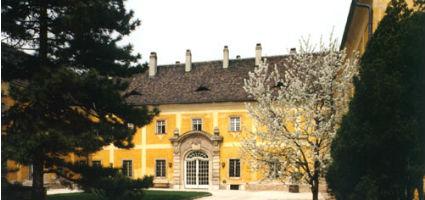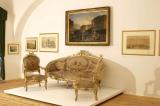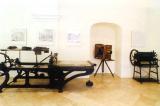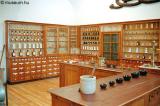2025. July 2. Wednesday
Museum Kiscell - Modern Urban History Collection - Budapest
 |
Address: 1037, Budapest Kiscelli utca 108.
Phone number: (1) 250-0304, (1) 250-0304
E-mail: kiscell@kiscellimuzeum.hu
Opening hours: 01.04-31.10.: Tue-Sun 10-18
01.11-31.03.: Tue-Sun 10-16 |
The Kiscelli Museum is one of the pearls of not only Óbuda, but also the whole of Budapest. The baroque style buildings were elevated for Trinitarian monks settled in Óbuda by the Zichy's. Plans for the monastery and church were drafted by the Viennese master architect Johann Entzenhoffer.
The Trinitarian church and monastery functioned up to 1784, when Joseph II's decree on dissolution hit the monastery, and its property and possessions were auctioned off. The church and monastery passed to the state treasury. During the next 100 years it functioned as a barracks, a military station and a hospital. The property was vacant when the Viennese furniture manufacturer Miksa Schnidt bought it in 1910. He aimed to turn the ruined building into an exhibition hall for his collection and sample items of furniture. Schmidt died in 1935. He bequeathed the building to the municipality on condition that they continued to operate a museum in it.
The first permanent exhibition after renovation works were completed in the Kiscell Museum opened in 1949.
Two main departments of the Budapest Historical Museum can be found in the building. Items of fine arts are exhibited by the Capital Gallery, whereas the modern historical collection of the Kiscell Museum exhibits the most valuable items of modern history.
The museum owns collections in the following fields: photography, toy, poster, lifestyle history, flag, glass, modern urban history and fine arts. Collections of the Royal Municipal Museum were moved to the building in 1938. Both the building and the collections suffered enormous damage during World War II.
The Trinitarian church and monastery functioned up to 1784, when Joseph II's decree on dissolution hit the monastery, and its property and possessions were auctioned off. The church and monastery passed to the state treasury. During the next 100 years it functioned as a barracks, a military station and a hospital. The property was vacant when the Viennese furniture manufacturer Miksa Schnidt bought it in 1910. He aimed to turn the ruined building into an exhibition hall for his collection and sample items of furniture. Schmidt died in 1935. He bequeathed the building to the municipality on condition that they continued to operate a museum in it.
The first permanent exhibition after renovation works were completed in the Kiscell Museum opened in 1949.
Two main departments of the Budapest Historical Museum can be found in the building. Items of fine arts are exhibited by the Capital Gallery, whereas the modern historical collection of the Kiscell Museum exhibits the most valuable items of modern history.
The museum owns collections in the following fields: photography, toy, poster, lifestyle history, flag, glass, modern urban history and fine arts. Collections of the Royal Municipal Museum were moved to the building in 1938. Both the building and the collections suffered enormous damage during World War II.
|
Programmes
|
|


